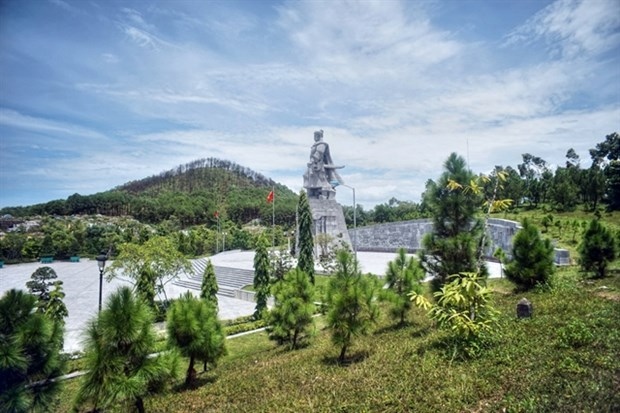Tay Son Dynasty worshipping platform unearthed in Hue
During the second phase of the archaeological excavation of Ban Mountain in the central province of Thua Thien-Hue, experts have published data on the scale and structure of the Heaven-worshipping platform of the Tay Son Dynasty (1778-1802).

Ban Mountain, located in An Tay ward of Hue city, is a rare vestige of the Tay Son Dynasty. It was designated a national historic site in 1988.
This excavation has revealed more about the size and original structure of the platform on Ban Mountain. These significant relics serve as the foundation for the province to pursue Ban Mountain's designation as a special national historic site.
The platform was built to form three floors in accordance with the three-element philosophy, representing heaven, earth and humans.
The results of the excavation have helped to determine this as the location where a leader of the peasant uprising, Nguyen Hue, was crowned to be King Quang Trung, This is also where the determination to drive away 29,000 Chinese Qing invaders began, resulting in the resounding victory for Vietnam in the spring of 1789.
The archaeologists believe the platform was built during the Tay Son period. It used the natural rocky terrain, where it was carved out of the rock, and then erected. This symbolises the importance of completing the platform and advancing to the throne.
In terms of construction methods, the excavation team found that Ban Mountain itself was dug into, creating three separate floors.
Because the construction site was uneven, it had been levelled with laterite soil, pure yellow clay, or a mixture of small pebbles and crushed stone to create a flat surface.
Architects of this period had a keen sense of planning, adding harmony, balance, and philosophy to their work. It is possible to perceive the distinction, and uniqueness of the structure.
There are also traces of foundations, stone embankments, and walls. The assessment of the bricks recovered, in particular, has determined the structure is from the 18th-century.
The size and colour of the bricks here are identical to those found in the architectural foundation bricks of the Nguyen Lords' temples and palaces, demonstrating the validity of the heaven worshipping platform built at Ban Mountain.
